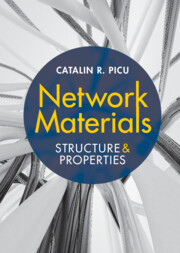55 results
Chapter 8 - Rotor Blade Technology
-
- Book:
- Wind Turbines
- Published online:
- 24 January 2025
- Print publication:
- 19 December 2024, pp 177-213
-
- Chapter
- Export citation
Identifying damage to composite materials based on deep residual shrinkage network
-
- Journal:
- The Aeronautical Journal / Volume 129 / Issue 1331 / January 2025
- Published online by Cambridge University Press:
- 13 December 2024, pp. 156-168
-
- Article
-
- You have access
- HTML
- Export citation
Four - Likeness and Integration among Extraordinary Creatures
-
- Book:
- Minoan Zoomorphic Culture
- Published online:
- 17 May 2024
- Print publication:
- 06 June 2024, pp 159-245
-
- Chapter
- Export citation
Five - Singular, Seriated, Similar
-
- Book:
- Minoan Zoomorphic Culture
- Published online:
- 17 May 2024
- Print publication:
- 06 June 2024, pp 246-309
-
- Chapter
- Export citation
Facile preparation of sepiolite-based composites and their antibacterial/rheological properties
-
- Journal:
- Clay Minerals / Volume 59 / Issue 2 / June 2024
- Published online by Cambridge University Press:
- 24 April 2024, pp. 127-135
-
- Article
-
- You have access
- HTML
- Export citation
Aeroelastic tailoring of stiffened cantilever plate using composites and structural layouts: A parametric study
-
- Journal:
- The Aeronautical Journal / Volume 128 / Issue 1327 / September 2024
- Published online by Cambridge University Press:
- 19 March 2024, pp. 2073-2091
-
- Article
-
- You have access
- HTML
- Export citation
Structure and Photoluminescence of Composites Based on CDS Enclosed in Magadiite
-
- Journal:
- Clays and Clay Minerals / Volume 61 / Issue 1 / February 2013
- Published online by Cambridge University Press:
- 01 January 2024, pp. 26-33
-
- Article
-
- You have access
- Export citation

Network Materials
- Structure and Properties
-
- Published online:
- 15 September 2022
- Print publication:
- 22 September 2022
Strength Analysis of Structurally Optimized Aluminium-Composite Tubular Lap Joints
-
- Journal:
- Proceedings of the Design Society / Volume 2 / May 2022
- Published online by Cambridge University Press:
- 26 May 2022, pp. 2473-2482
-
- Article
-
- You have access
- Open access
- Export citation
Development of an actuated corrugated laminate for morphing structures
- Part of
-
- Journal:
- The Aeronautical Journal / Volume 125 / Issue 1283 / January 2021
- Published online by Cambridge University Press:
- 17 August 2020, pp. 180-204
-
- Article
- Export citation
Analysis of in vitro corrosion behavior and hemocompatibility of electrophoretically deposited bioglass–chitosan–iron oxide coating for biomedical applications
-
- Journal:
- Journal of Materials Research / Volume 35 / Issue 13 / 14 July 2020
- Published online by Cambridge University Press:
- 22 June 2020, pp. 1749-1761
- Print publication:
- 14 July 2020
-
- Article
- Export citation
8 - Rotor Blade Technology
-
- Book:
- Wind Turbines
- Published online:
- 08 February 2020
- Print publication:
- 20 February 2020, pp 174-209
-
- Chapter
- Export citation
Nano-sized TiN-reinforced composites: Fabrication, microstructure, and mechanical properties
-
- Journal:
- Journal of Materials Research / Volume 34 / Issue 15 / 14 August 2019
- Published online by Cambridge University Press:
- 19 July 2019, pp. 2582-2589
- Print publication:
- 14 August 2019
-
- Article
- Export citation
Rapid Determination of the Distribution of Cellulose Nanomaterial Aggregates in Composites Enabled by Multi-Channel Spectral Confocal Microscopy
-
- Journal:
- / Volume 25 / Issue 3 / June 2019
- Published online by Cambridge University Press:
- 06 May 2019, pp. 682-689
- Print publication:
- June 2019
-
- Article
- Export citation
Experimental investigation on effects of varying volume fractions of SiC nanoparticle reinforcement on microstructure and mechanical properties in friction-stir-welded dissimilar joints of AA2024-T351 and AA7075-T651
-
- Journal:
- Journal of Materials Research / Volume 34 / Issue 7 / 15 April 2019
- Published online by Cambridge University Press:
- 28 January 2019, pp. 1229-1247
- Print publication:
- 15 April 2019
-
- Article
- Export citation
Rotorcraft virtual engineering; supporting life-cycle engineering through design and development, test and certification and operations
- Part of
-
- Journal:
- The Aeronautical Journal / Volume 122 / Issue 1255 / September 2018
- Published online by Cambridge University Press:
- 01 June 2018, pp. 1475-1495
-
- Article
- Export citation
Ionically cross-linked chitosan–halloysite composite microparticles for sustained drug release
-
- Journal:
- Clay Minerals / Volume 52 / Issue 4 / December 2017
- Published online by Cambridge University Press:
- 27 February 2018, pp. 413-426
-
- Article
- Export citation
Synthesis and optical properties of composites based on ternary Zn1–xCdxS nanoparticles enclosed in a layered octosilicate
-
- Journal:
- Clay Minerals / Volume 49 / Issue 5 / December 2014
- Published online by Cambridge University Press:
- 27 February 2018, pp. 703-716
-
- Article
- Export citation
Experimental and Numerical Studies on Ballistic Laminates on the Polyethylene and Polypropylene Matrix
-
- Journal:
- Journal of Mechanics / Volume 35 / Issue 2 / April 2019
- Published online by Cambridge University Press:
- 15 November 2017, pp. 187-197
- Print publication:
- April 2019
-
- Article
- Export citation
High-performance composite with negative Poisson’s ratio
-
- Journal:
- Journal of Materials Research / Volume 32 / Issue 18 / 28 September 2017
- Published online by Cambridge University Press:
- 11 September 2017, pp. 3477-3484
- Print publication:
- 28 September 2017
-
- Article
- Export citation


